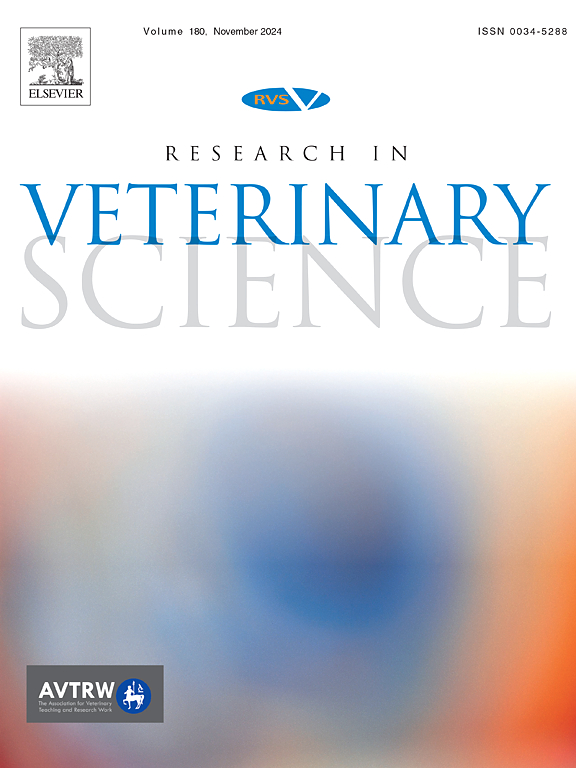Alternative approaches for bovine mastitis treatment: A critical review of emerging strategies, their effectiveness and limitations
IF 2.2
3区 农林科学
Q1 VETERINARY SCIENCES
引用次数: 0
Abstract
Background
This review examined alternative treatments for bovine mastitis, driven by the rising issue of antibiotic resistance that limits the effectiveness of antibiotic therapies. As few new antibiotics are being developed, exploring non-antibiotic options is essential.
Method
Data were gathered by searching five databases, including PubMed, Scopus, Google Scholar, NCBI, and CABI, for articles on alternative treatments for bovine mastitis. Full texts of relevant studies published from 2013 onwards, both in vitro and in vivo, were screened and retrieved. A deductive approach was used to identify key themes from the review. Data were presented using tables and graphs created with R software for visualisation.
Results
Eligible studies included 69 articles tapered from an initial search of 1696 after removing duplicates and irrelevant records. Phytotherapy was found to be the most extensively researched approach, demonstrating significant effectiveness against mastitis pathogens, including multidrug-resistant Staphylococcus aureus, coagulase-negative S. aureus (CoNS), Escherichia coli, different species of Streptococci, though concerns about the degradation of active compounds in milk and variability in natural product composition exist. Bacteriophage therapy also showed promise, with studies indicating its effectiveness and low risk of inducing bacterial resistance. Treatments such as Trisodium citrate, pheromonicin-NM, and lactoferrin therapy exhibited statistically significant results, particularly against biofilm formation, a major challenge in mastitis management. Many of these treatments lacked extensive in vivo validation. The review highlights the geographic concentration of research, predominantly in countries like China and India, and emphasises the need for more standardised protocols to improve comparison across studies.
Conclusion
The review highlighted phytotherapy, followed by bacteriophage therapy, as the next most researched alternative treatment for mastitis, effective against various pathogens despite concerns about compound degradation. Future research should prioritise the long-term effects of these therapies and their real-world effectiveness in enhancing dairy cow welfare and improving productivity in dairy operations.

求助全文
约1分钟内获得全文
求助全文
来源期刊

Research in veterinary science
农林科学-兽医学
CiteScore
4.40
自引率
4.20%
发文量
312
审稿时长
75 days
期刊介绍:
Research in Veterinary Science is an International multi-disciplinary journal publishing original articles, reviews and short communications of a high scientific and ethical standard in all aspects of veterinary and biomedical research.
The primary aim of the journal is to inform veterinary and biomedical scientists of significant advances in veterinary and related research through prompt publication and dissemination. Secondly, the journal aims to provide a general multi-disciplinary forum for discussion and debate of news and issues concerning veterinary science. Thirdly, to promote the dissemination of knowledge to a broader range of professions, globally.
High quality papers on all species of animals are considered, particularly those considered to be of high scientific importance and originality, and with interdisciplinary interest. The journal encourages papers providing results that have clear implications for understanding disease pathogenesis and for the development of control measures or treatments, as well as those dealing with a comparative biomedical approach, which represents a substantial improvement to animal and human health.
Studies without a robust scientific hypothesis or that are preliminary, or of weak originality, as well as negative results, are not appropriate for the journal. Furthermore, observational approaches, case studies or field reports lacking an advancement in general knowledge do not fall within the scope of the journal.
 求助内容:
求助内容: 应助结果提醒方式:
应助结果提醒方式:


